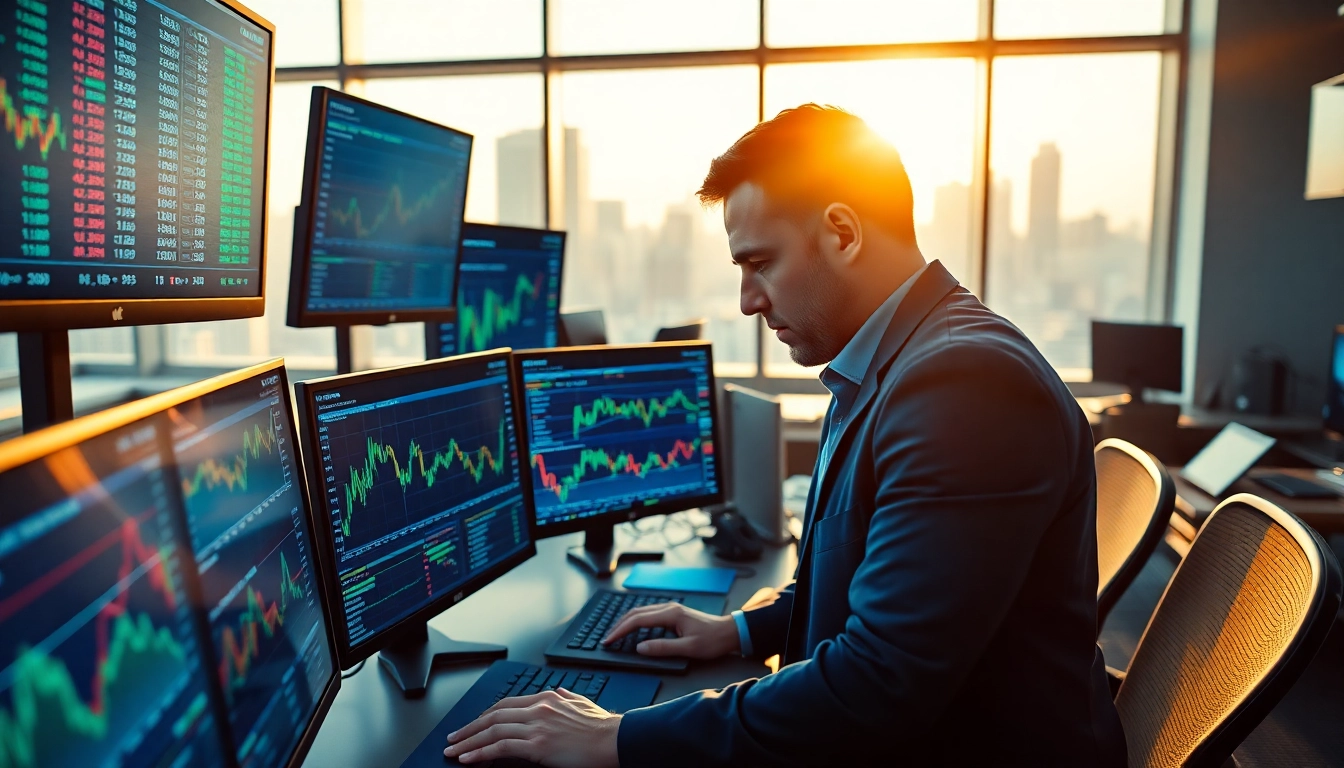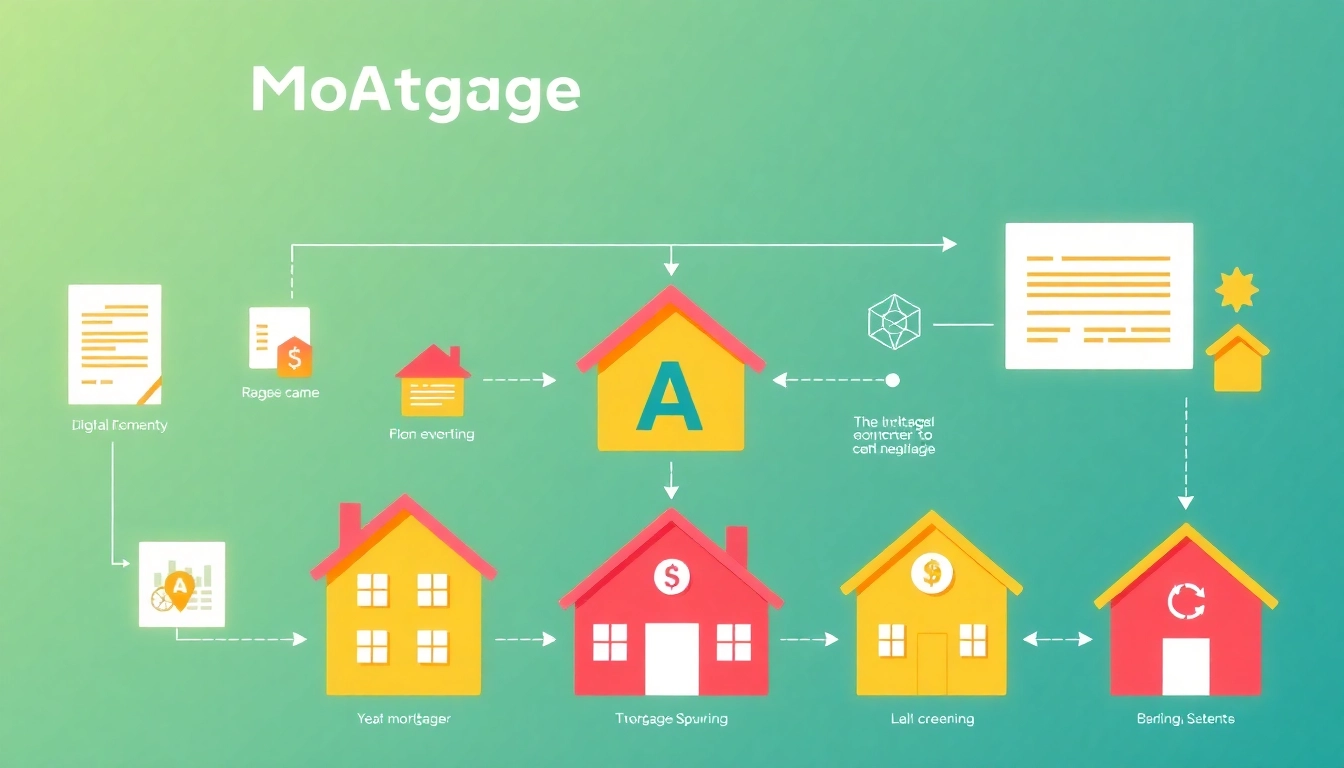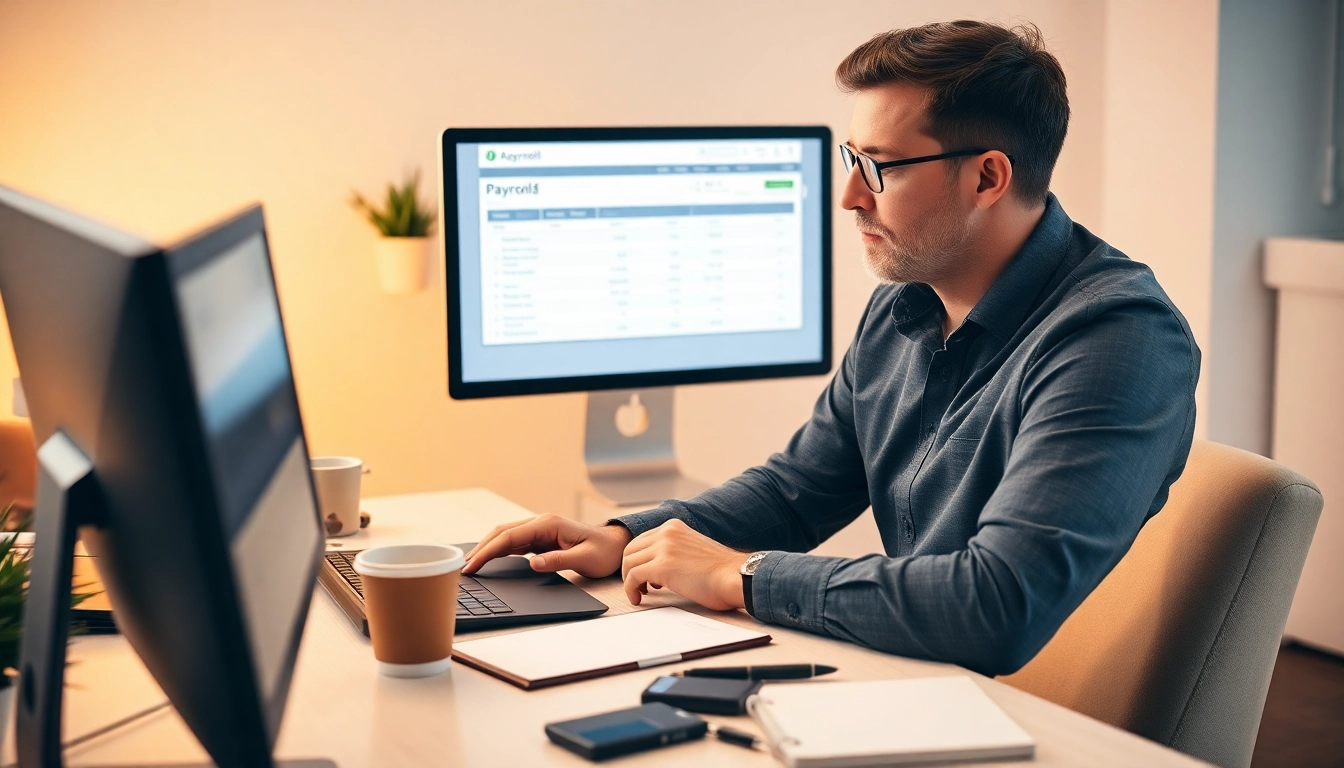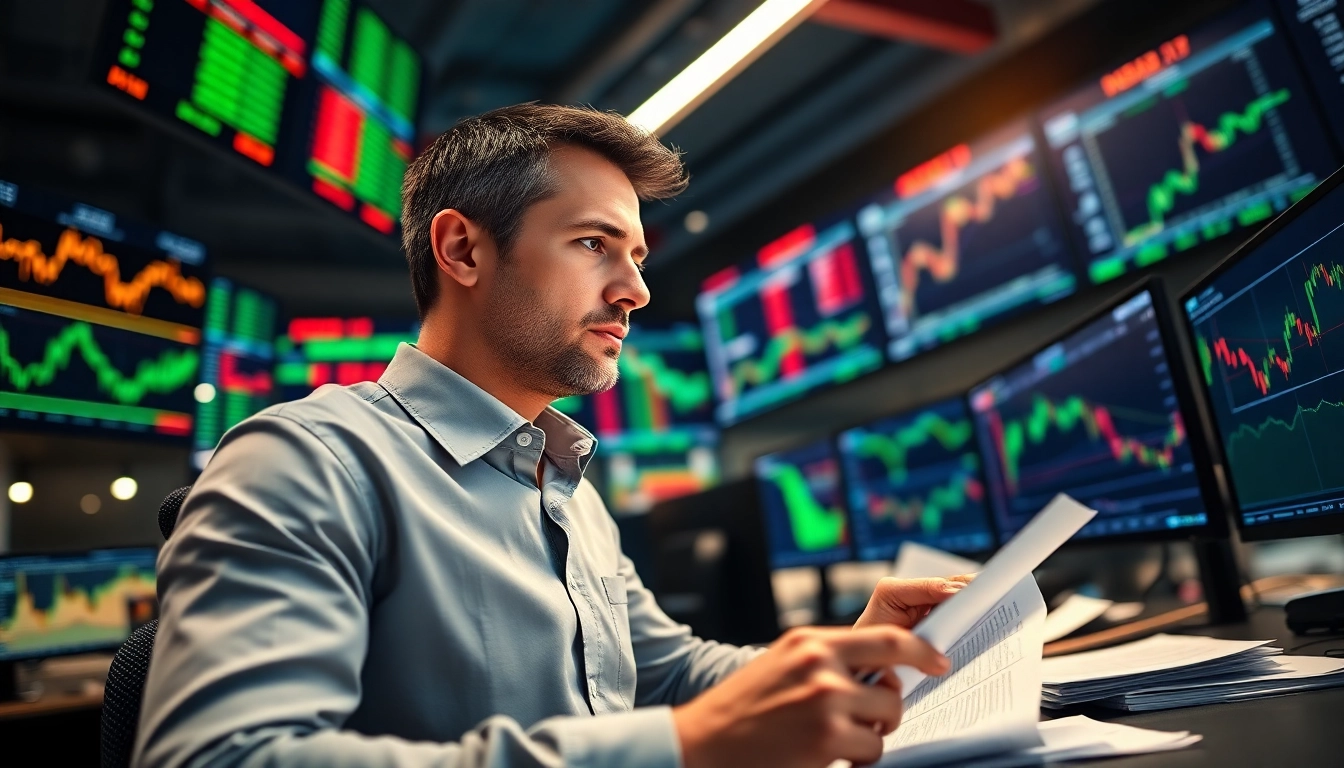Understanding Trade Futures
In the world of finance and investing, futures contracts serve as a cornerstone for managing risk and speculating on price movements of various assets. Understanding the nuances of trade futures allows investors to navigate complex markets effectively. This comprehensive guide will delve into what trade futures are, their key components, the benefits of investing in them, and how to embark on your journey in futures trading.
What are Trade Futures?
Trade futures are standardized contracts that obligate the buyer to purchase, and the seller to sell, a specified quantity of an asset at a predetermined price on a set future date. These assets can range from commodities, such as oil and wheat, to financial instruments, including stock indices and interest rates. Futures contracts are traded on exchanges, providing a platform for price discovery and risk management.
Key Components of Trade Futures
Understanding the structure of futures contracts is crucial for any trader. Here are the primary components:
- Underlying Asset: The item that futures contracts represent, such as a commodity or financial instrument.
- Contract Size: This specifies the amount of the asset involved in the contract. For example, one contract for crude oil might represent 1,000 barrels.
- Expiry Date: Futures contracts have set expiration dates, after which the contract becomes void.
- Settlement Method: This can either be physical—noting delivery of the asset—or cash, where the difference between the contract price and spot price at expiry is settled in cash.
- Margin Requirements: Traders must set aside a margin amount to cover potential losses on their position, which is a fraction of the total contract value.
Benefits of Investing in Trade Futures
Investing in trade futures offers several advantages:
- Leverage: Futures allow traders to control a larger position with a smaller initial investment, maximizing potential returns.
- Liquidity: Futures markets are typically highly liquid, making it easier to enter and exit positions.
- Diverse Investment Opportunities: With a wide range of underlying assets, investors can diversify their portfolios to mitigate risks.
- Hedging: Futures contracts are an effective way for businesses and investors to hedge against price fluctuations in commodities and financial instruments.
How to Start Trading Futures
Starting in futures trading requires careful planning and strategy. Here’s a step-by-step guide:
Opening a Futures Trading Account
The first step toward trading futures is to open an account with a brokerage that offers futures trading. When choosing a broker, consider the following factors:
- Commissions and Fees: Compare the cost structure of various brokers. Look for trading fees, account maintenance fees, and other expenses.
- Platform and Tools: Ensure the broker’s trading platform offers the necessary tools for analysis and order execution.
- Customer Support: Opt for a broker with reliable customer service, as help can be crucial during volatile market conditions.
Choosing Your First Futures Contracts
When selecting your first futures contracts, consider the following:
- Market Interest: Start with markets you are familiar with, whether commodities, indices, or currencies.
- Volatility: Look for contracts with an appropriate level of volatility that matches your risk tolerance.
- Contract Specifications: Be well-versed in the specifics of each contract, including margin requirements and trading hours.
Developing a Trading Plan
A well-structured trading plan is essential for success. Your plan should include:
- Investment Goals: Define your short-term and long-term trading objectives.
- Risk Management Rules: Establish how much capital you are willing to risk on a single trade.
- Entry and Exit Strategies: Determine the criteria that will prompt you to enter or exit a trade.
- Performance Review: Schedule regular reviews of your trading performance to identify strengths and weaknesses.
Strategies for Successful Trade Futures
Successful futures trading is a blend of strategy, analysis, and psychological resilience. Here are some effective strategies:
Technical Analysis Techniques
Technical analysis involves studying price patterns and trends to make trading decisions. Key techniques include:
- Charts: Utilize various chart types, such as candlestick or line charts, to visualize market movements.
- Indicators: Implement indicators like Moving Averages, RSI, and MACD to identify potential entry and exit points.
- Volume Analysis: Analyze trading volume to gauge the strength or weakness of price movements.
Risk Management Strategies
Effective risk management is vital in futures trading. Key strategies include:
- Setting Stop-Loss Orders: Determine the price point at which you will exit a losing trade to limit losses.
- Diversification: Spread your investments across different contracts to manage overall portfolio risk.
- Position Sizing: Control the size of each trade based on the risk portion of your capital you are willing to allocate.
Using Indicators for Trade Futures
Indicators can enhance your trading by providing insight into market trends. Common indicators include:
- Moving Averages: These can help identify the direction of the trend and potential reversal points.
- Relative Strength Index (RSI): Used to measure the speed and change of price movements, RSI can highlight overbought or oversold conditions.
- Bollinger Bands: These indicate volatility and potential overbought/oversold conditions by displaying price fluctuations relative to a moving average.
Market Trends Impacting Trade Futures
The futures markets are heavily influenced by various market trends. Here are key factors to consider:
Economic Indicators and Their Effects
Economic indicators provide insight into the health of the economy, which can impact futures prices. Key indicators include:
- Gross Domestic Product (GDP): Strong GDP growth can drive demand for commodities.
- Employment Reports: Job growth can indicate rising consumer confidence and spending, influencing demand for goods.
- Interest Rates: Changes in interest rates can affect currency values and, subsequently, futures prices.
Global Events Influencing Futures Markets
Global events can create volatility in futures markets. Key influences include:
- Natural Disasters: Events like hurricanes or earthquakes can impact commodity supply.
- Geopolitical Tensions: Conflicts can disrupt oil supplies or agricultural production, influencing prices.
- Trade Policies: Tariffs and trade agreements can affect market access and pricing for commodities.
Seasonal Trends in Trade Futures
Seasonality is a crucial factor in many commodity markets. Certain commodities tend to experience price fluctuations based on time of year, due to factors such as:
- Harvest Cycles: Agricultural commodities often see price movements tied to harvest times.
- Weather Patterns: Seasonal weather patterns can affect supply and demand, particularly for energy and agriculture.
- Consumer Demand: Events like holidays can influence demand levels for certain goods.
Performance Metrics and Analysis
Analyzing your performance as a futures trader is critical for long-term success. Here’s how to assess your trading effectively:
Evaluating Your Trading Performance
Your trading performance can be evaluated through several key metrics:
- Win Rate: This is the percentage of trades that resulted in profit.
- Profit Factor: This is the ratio of gross profit to gross loss, indicating overall profitability.
- Risk-Reward Ratio: Compare the potential risks of a trade to its expected rewards to determine if the trade is worth taking.
Adjusting Strategies Based on Results
Regularly analyze your trading results to adjust your strategies:
- Review Trades: Analyze past trades to understand what worked and what didn’t.
- Adapt Strategies: Modify your trading strategies based on performance insights and market changes.
- Embrace Feedback: Seek input from other traders and mentors to refine your approach.
Monitoring Market Sentiment
Market sentiment plays a significant role in futures trading:
- News Impact: Stay updated on news that may influence sentiment, such as economic reports and geopolitical events.
- Investor Surveys: Monitor investor sentiment surveys to gauge market optimism or pessimism.
- Social Media Trends: Analyze trends on platforms like Twitter or Reddit, where traders discuss market conditions and sentiment.
In conclusion, mastering trade futures allows investors to harness opportunities in volatile markets while managing risks effectively. By understanding the fundamentals of futures contracts, developing robust trading plans, employing strategic analysis, and continuously monitoring market conditions, traders can work toward achieving their financial objectives. Engaging with the futures market requires diligence and a commitment to learning, but the potential rewards justify the effort.



